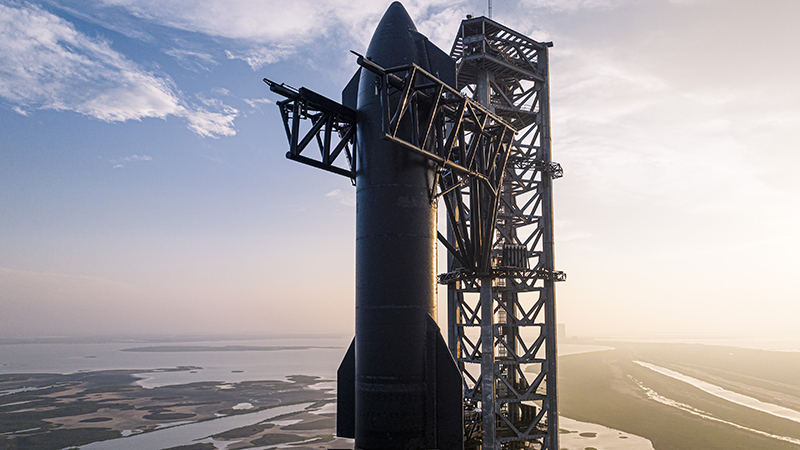Hamartia Antidote
ELITE MEMBER

- Joined
- Nov 17, 2013
- Messages
- 35,188
- Reaction score
- 30
- Country
- Location
NASA and SpaceX explore using Starship as space station
 SpaceX’s Starship rocket sits on a launch pad at the company’s Starbase in Texas (Credits: SpaceX
SpaceX’s Starship rocket sits on a launch pad at the company’s Starbase in Texas (Credits: SpaceXElements of the largest and most powerful rocket ever flown could be repurposed as a space station, NASA has said.
The SpaceX Starship system, including the Starship spacecraft and Super Heavy rocket, is designed to carry both crew and cargo to Earth orbit, the Moon, Mars, and beyond.
The spacecraft, which can carry up to 100 crew, could also be used as an “in-space low Earth orbit destination element”, according to the US space agency. It is working with SpaceX on an “integrated low Earth orbit architecture”, which would also involve the Super Heavy, the Dragon spacecraft, and Starlink internet satellites.
The collaboration was one of seven partnerships announced between NASA and US companies yesterday (15 June), aimed at benefiting human spaceflight and developing the US ‘commercial low Earth orbit economy’.
Other projects include:
- Sierra Space will develop “next-generation space transportation, in-space infrastructure, and expandable and tailorable space facilities, providing a human presence in low Earth orbit”
- Northrop Grumman will work with NASA on a ‘Persistent Platform’ aimed at providing autonomous and robotic capabilities for commercial science research and manufacturing capabilities in low Earth orbit
- Special Aerospace Services will work on an in-space servicing, propulsion, and robotic technology called the Autonomous Manoeuvring Unit (AMU) and the Astronaut Assist-AMU for “commercial in-space servicing and mobility applications intended for safer assembly of commercial low Earth orbit destinations, servicing, retrieval, and inspection of in-space systems”
- ThinkOrbital will develop ThinkPlatforms, “self-assembling, single-launch, large-scale orbital platforms” that facilitate a wide array of applications in low Earth orbit, including in-space research, manufacturing, and astronaut missions. It will also work on Contesa (Construction Technologies for Space Applications), including welding, cutting, inspection, and additive manufacturing technologies, and large-scale in-space fabrication
- Vast will work on technologies and operations required for its microgravity and artificial gravity stations, including the Haven-1 commercial destination, which will provide a microgravity environment for crew, research, and in-space manufacturing, and the first crewed mission to the platform. Development activities for larger space station modules will also take place
- Blue Origin will develop integrated commercial space transportation capabilities for “safe, affordable, and high-frequency US access to orbit for crew and other missions”.
In 2019, NASA adopted a strategy to help achieve the agency's goal of a ‘low Earth orbit marketplace’, where NASA is one of many customers and the private sector leads the way.
The new collaborations are unfunded Space Act Agreements, part of the Collaborations for Commercial Space Capabilities-2 initiative (CCSC-2).
“It is great to see companies invest their own capital toward innovative commercial space capabilities, and we’ve seen how these types of partnerships benefit both the private sector and NASA,” said Phil McAlister, director of commercial spaceflight at NASA headquarters in Washington DC.
“The companies can leverage NASA’s vast knowledge and experience, and the agency can be a customer for the capabilities included in the agreements in the future. Ultimately, these agreements will foster more competition for services and more providers for innovative space capabilities.”
